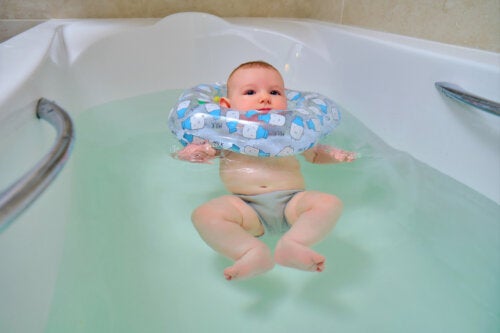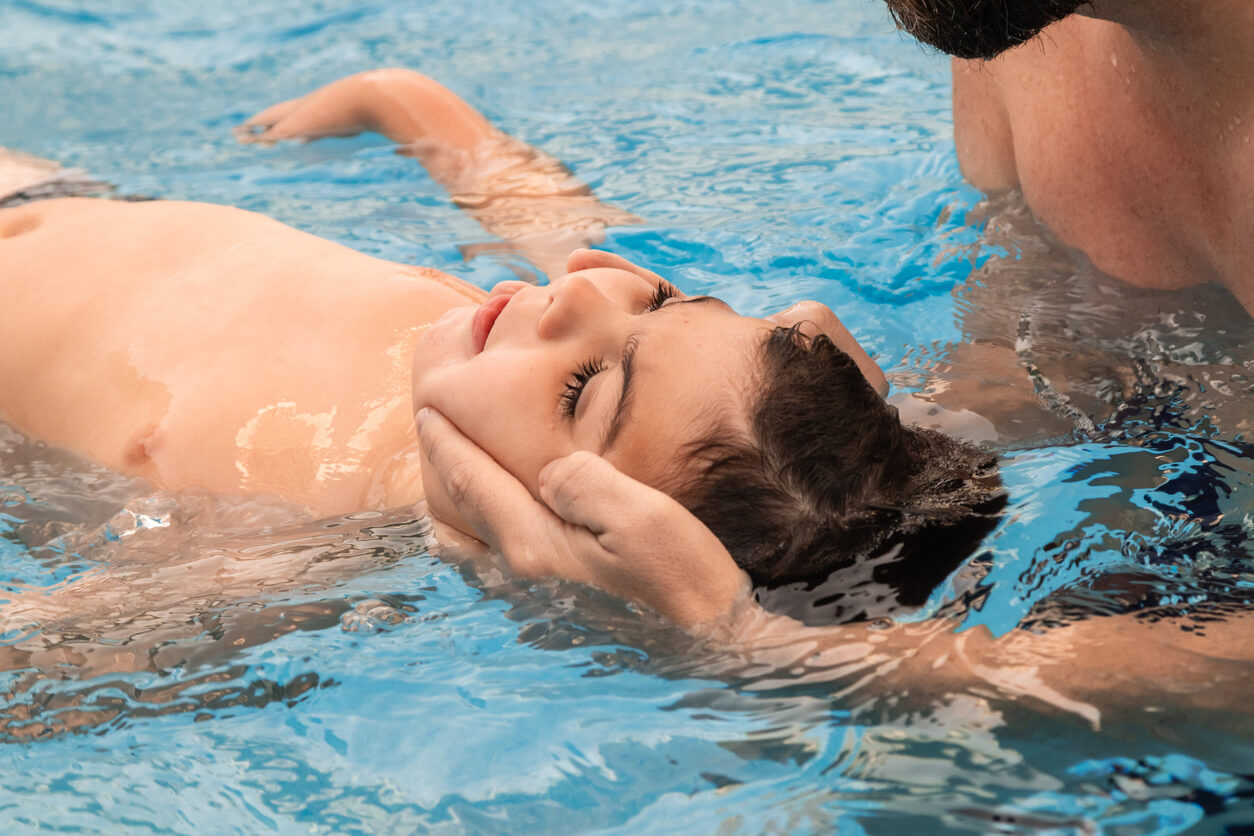Neck Floaties for Babies: Are They Safe?

Different flotation devices have been available for many decades to keep young children safe. But lately, baby neck floaties have come out and many parents are wondering if they’re really as safe as they promise to be.
The Spanish Association of Pediatrics expressed its opinion in this regard and explained that the safest way to bathe an infant is in the arms of an adult caregiver and under constant supervision.
With this statement, professionals who care for the health of children make it clear that no inflatable device guarantees absolute safety when infants are in the water.
In the following article, we’re going to analyze a little more in depth the topic of neck floats. What do you think?
How to take care of children in the water
One of the favorite vacation plans of families is to go to places with water, such as beaches, lakes, or swimming pools. Even with the risk that this implies for children.
According to a report by the World Health Organization (WHO), the highest rates of drowning worldwide have to do with children between 1 and 4 years of age, followed by those between 5 and 9 years of age.
Many of these cases occur as a result of adults’ inattention and overconfidence in leaving children in or near the water.
At the same time, it’s important to note that neither taking the child to swimming lessons nor fitting a flotation device exempts parents from the responsibility of providing care in the water.
No element or strategy is infallible and, furthermore, children have no idea of risk or the ability to take care of themselves in an aquatic environment.

Why is the use of neck floaties discouraged?
There are several reasons that indicate that these elements aren’t totally safe and all of these reasons are endorsed by specialists. Below, we’ll explain them in detail one by one. Keep reading!
Neck floaties provide a false sense of security
The use of elements that help babies float in the water awakens a false sense of security in adults, as indicated by the Spanish Association of Pediatrics. This causes the caregivers to unconsciously neglect their little ones, which considerably increases the risk of drowning.
They force the posture of the baby’s neck
Following the opinion of Spanish professionals, we find that these neck floaties keep the child’s neck in an unnatural position. As a result, the cervical muscles and ligaments can be strained and injured.
They don’t favor the interaction between the child and the water
The position that babies adopt when they have these neck floaties placed on them doesn’t allow them to move freely in the water, much less learn to swim.
In reality, the opposite effect is produced. Though our intention is to take a baby to the pool so that they become familiar with the water, we completely limit their movement within it.
Neck floaties are insecure devices!
Neck floaties are made of a smooth plastic material, which becomes slippery when wet. Thus, the baby’s head can slide down and favor the sinking of the entire body. Also, the floaty may deflate and loses buoyancy.
When to use neck floaties?
The opinion of pediatricians regarding the use of these flotation elements is clear: They’re only recommended in the context of specific therapies and under the supervision of qualified professionals.

Water yes, baby neck floaties no
For specialists to recommend the use of certain elements in children, there must be studies that demonstrate their benefits and safety. In the case of neck floaties, none of these data have been corroborated.
Neck floaties don’t seem like an appropriate option to keep children in the water and it seems that mom’s arms are the best alternative.
It’s important to emphasize that water activities offer many benefits for the development of children, especially when they’re practiced from an early age. In the case of babies, it’s possible to opt for infant swimming classes, and from the age of 4, it’s possible to advance with swimming classes.
According to the American Academy of Pediatrics, between one and four years of age, little ones acquire survival skills in the aquatic environment, although each one shows a different rhythm to achieve it.
Teaching children to function in the water should be a priority for all families, as it offers them fundamental tools for self-care throughout life. However, these lessons must be carried out with specialized professionals and with the appropriate materials. In this sense, neck floaties don’t meet these conditions.
All cited sources were thoroughly reviewed by our team to ensure their quality, reliability, currency, and validity. The bibliography of this article was considered reliable and of academic or scientific accuracy.
- American Academyc of Pediatrics (15 de marzo de 2019) Lecciones de natación: cuándo comenzar y qué deben saber los padres. Disponible en: https://www.healthychildren.org/English/safety-prevention/at-play/Pages/Swim-Lessons.aspx
- Fundación Española del Corazón (2019). ¿Por qué es importante que los niños practiquen natación? Hospital Saint Joan de Deu, Barcelona, España. Disponible en: https://faros.hsjdbcn.org/es/articulo/importante-ninos-practiquen-natacion
- Gonzalez Rodriguez, M. (2018) Flotadores de cuello: Mejor no. Asociación Española de Pediatría. Disponible en: https://enfamilia.aeped.es/prevencion/flotadores-cuello-mejor-no
- Hospitales Vithas (9 de julio de 2020) Los pediatras desaconsejan el uso de flotadores de cuello en bebe. Disponible en: https://vithas.es/los-pediatras-desaconsejan-el-uso-de-flotadores-de-cuello-en-bebes/
- Organización Mundial de la Salud (27 de abril de 2021). Ahogamientos. Disponible en: https://www.who.int/es/news-room/fact-sheets/detail/drowning
